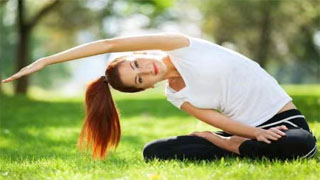
A common symptom among many office workers is hunchback! Using a computer all day in the office and constantly sliding down your phone at home can lead to annoying hunchback problems due to poor posture. In fact, hunchback not only makes a person's body look unattractive, but can also make them appear overweight due to thickening of the back and rounded shoulders! So today let's take a look at several methods and movements to correct hunchback and maintain a healthy and elegant posture!
Hunchback correction 3 actions
1. Bow style
2. Cobra style
3. Lower dog style
The most common cause of hunchback
Before correcting hunchback, it is important to first understand several reasons for hunchback. The following may be overlooked by mistake and cannot be ignored!
Poor posture: Long term maintenance of poor sitting or standing posture, such as using a mobile phone with a lowered head or bending over excessively, can cause excessive stretching of the back muscles, leading to spinal curvature and the formation of a hunchback.
Muscle imbalance: If the body's muscle groups are imbalanced, with some muscles being overly tense while others are weaker, this can affect the correct alignment and support of the spine, leading to the formation of a hunchback.
Lack of exercise: Prolonged sitting and lack of exercise can lead to muscle decline and spinal instability, increasing the risk of hunchback.
Age factor: As age increases, the strength of the surrounding tissues and muscles of the spine may weaken, making it easier to experience postural abnormalities, including hunchback.
Overweight or obesity: Overweight or obesity can increase the burden on the back muscles, putting greater pressure on the spine and easily leading to hunchback.
How to correct hunchback in daily life
Of course, because the habit of hunchback is not developed in a day, it is not easy to correct it all at once. It is recommended to gradually improve it from daily life. Here are a few good habits that need to be developed in daily life.
1. Maintain good standing and sitting posture
This is the most effective way to improve hunchback habits in daily life. When standing or sitting, remember to remind yourself to pull your shoulders back, tighten your abdomen, and keep your spine in a neutral position at all times. At the same time, it is also necessary to avoid prolonged use of computers and mobile phones, and it is best to get up and move every hour.
2. Train the core muscle group
Many people know the importance of core muscles, but in fact, core muscles are also closely related to hunchback, because core muscles are the key muscle groups that support spinal stability, including the muscles around the abdomen, back, and pelvis. If you can train through activities such as stick and bridge exercises, you can strengthen the muscle groups and make the body naturally straight.
Hunchback correction: 3 yoga movements for correcting hunchbacks
Finally, I would like to teach you some yoga exercises that can help correct hunchback. It is recommended to practice for half an hour before going to bed every day to adjust your posture!
1. Correcting hunchback yoga movements: bow style
Archery training can strengthen the muscle mass of the upper and lower back, making the back lines tighter and more attractive. It can also improve problems such as hunchback and spinal discomfort, as well as enhance circulation near the pelvic area and improve gynecological problems.
Bow style movements:
First, lie flat on the yoga mat
Bend the knees of both feet and pull the instep back with both hands. If you can't pull it, you can use a towel to assist
Steady breathing raises the upper body, pushes the chest forward, and opens the shoulders
Slowly pull your hands back with your legs, while raising your knees. After exhaling, kick your feet back to arch your entire body, keep your body relaxed when inhaling, and pull your body back when exhaling, maintaining three to five cycles
2. Correcting hunchback yoga movements: Cobra style
Cobra style can help stretch the entire spine, from the neck to the upper and lower back, and then to the hips and pelvis, relieving the pressure caused by prolonged sitting and standing. It can solve pain and discomfort in the shoulders, neck, waist, and back, while also soothing the sciatic nerve.
Cobra like movement:
Lie prone on the ground with legs and hips at the same width, with palms placed on the chest side and fingertips facing forward
When inhaling, push your palm downwards while sliding your upper body forward, and lift your head, chest, and abdomen in sequence
Maintain three to five breathing cycles before returning to the ground
3. Correcting hunchback yoga movements: Lower dog style
The lower dog style can stretch not only the muscles in the back, but also the shoulders, arms, and legs. By pressing down with both hands, it can help open the chest, correct hunchback and spine position, and make breathing smoother.
Dog style movements:
Kneel down on both knees and place your hands shoulder width apart on a yoga mat
Step on the ground with your toes, lift your knees, and push your hips back into a downward dog stance
Lower shoulders, naturally droop head, stretch back and raise hips as much as possible


